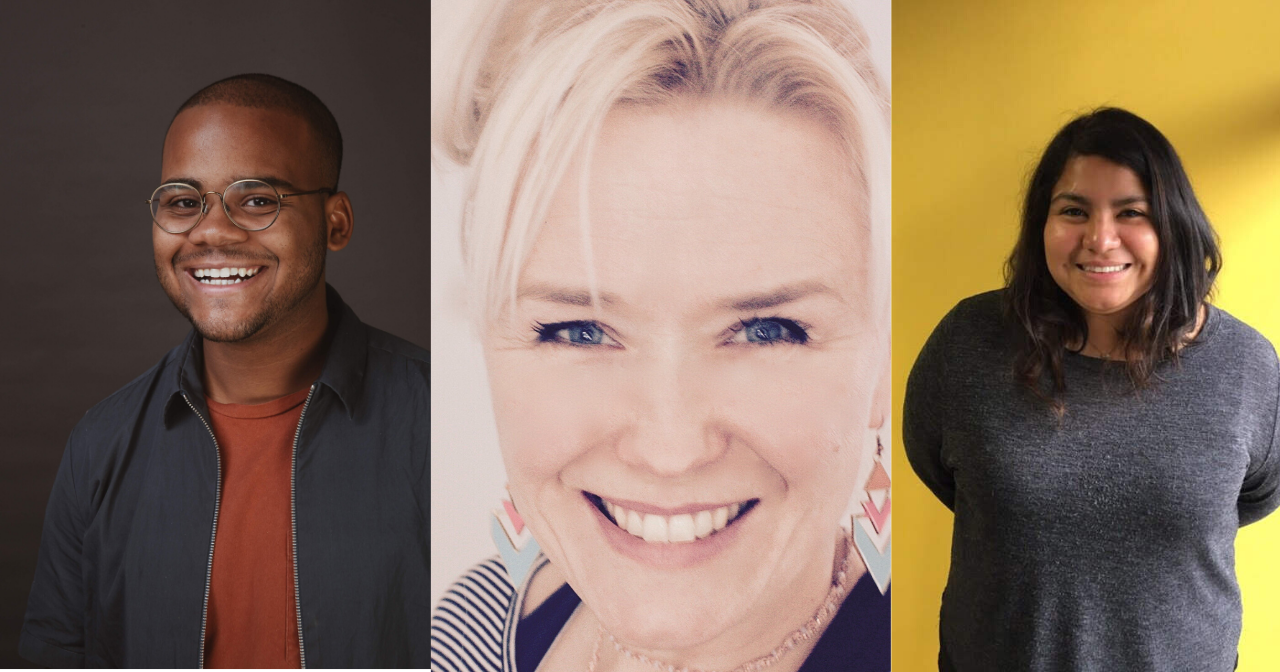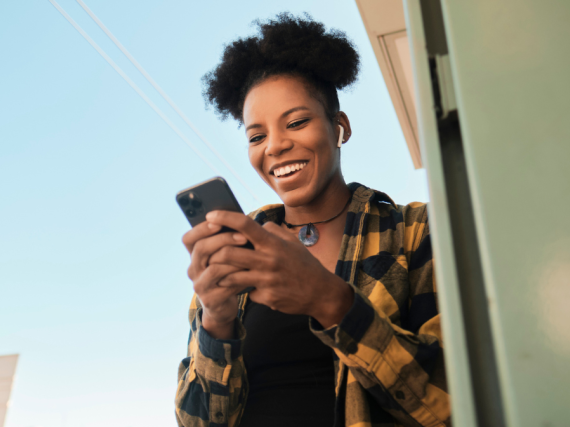Catching Up with HelloooAmerica!
Now in its fifth year, and with funding from the Department of Health and Human Services’ Office of Population Affairs, Innovation Next is a unique accelerator program aimed at redefining adolescent sexual health through a focus on technology-enabled ideas to ensure that young people have the information and access to services they need. Fourth Cohort team, HelloooAmerica! (formerly Healthy You, Healthy Future) discusses their work so far and what they hope the future holds.
How did you first hear about Innovation Next and how did you form your team?
Our team learned about Innovation Next through our advisory colleagues who also participated in Innovation Next in 2016. Our team was interested to build on the work of Dr. Helen Wang, SUNY Buffalo, who received design thinking training as part of the first cohort of Innovation Next. Our team was interested in extending Design Thinking skills and creating a technology-based platform that is made for and co-created by young refugee women in America, to address the barriers to access of sexual and reproductive health (SRH) education and services.
What was your team's original idea for Innovation Next?
One of our original ideas was to create an online video-based community via a YouTube channel, featuring virtual roundtables where women could watch and participate in discussing topics on SRH. This pre-recorded “talk show” could feature a young female refugee host and a few guests, discussing a different SRH topic each episode. The guests might vary each episode, and include refugees, community and religious leaders, educators, health and legal professionals, and storytellers. The conversation would integrate audience input to bring their stories, opinions and questions into the mix. Roundtable topics could focus on intimate relationships, personal choice in family planning, long acting reversible contraceptives, birth control side-effects, preventing and coping with sexual violence, and women’s individual rights related to SRH options such as abortion, among other topics.
Did your idea change once you began the Innovation Next design process?
Absolutely, the human-centered design process we underwent in Innovation Next significantly evolved our project design. We heard that a phone app would not be a desirable method to deliver SRH education since many refugee young women share their phone with their family and friends and therefore would not want an app about very private information visible to the other people sharing their phone. Some women said that the presence of such an app might bring on teasing, raise suspicions, or place an uncomfortable label on them.
Our design research also revealed that refugee young women associate SRH education with awkward feelings and difficult conversations, often stemming from cultural beliefs and community pressures. This nixed our idea of a straight talk-show format. We also learned more about the overall cultural shock and learning curve these women went through upon arriving in America. We heard about their preferences for activities during their very limited free time, and for entertainment and social connections. They talked about which tools they used to communicate with friends, look up information, and access entertainment.
Based on these insights, our team then developed SRH messages and themes that could be contextualized in and delivered through “safer” general content - such as cultural activities or beauty tips (a type of online video favored among the community) and content relating to starting a new life in America.
The resulting solution, dubbed “HelloooAmerica!,” is an entertainment lifestyle online video series comprised of different types of segments. Segments might include group conversations in cozy “private settings,” how-to demonstrations, and tours of relevant places.
How did Innovation Next cause you to think outside of the box?
We learned some powerful - and fun - techniques during the Innovation Next design process that helped our team to think outside the box. Some of our favorite tools were analogous experiences, card sorts, and collaging (creating mood boards from images) with refugee young women.
During the design process we interviewed 20 young refugee women from 7 countries and 7 experts who work closely with these women and their cultural communities. We also brainstormed with refugee youth in an art workshop, workshopped ideas in a video workshop, visited their community, attended a refugee storytelling event and SRH education classes, and immersed ourselves in analogous experiences to deepen our understanding. The process and guidance we received through Innovation Next led our team to not just interview refugee young women about their reproductive health needs but made us consider the interconnectedness of all aspects of their lives and communities that underlies SRH in their lives. This complexity deeply informed the technology solution we designed.
What is your biggest takeaway from Innovation Next?
Working with Innovation Next helped our team realize the multiple benefits of Design Thinking. For example, it made our solution extremely applicable to our users’ lifestyle and culture through interview techniques such as Conversation Starter cards and Card Sort. Design Thinking also helped us identify Extreme users who could provide us with valuable knowledge and led to our team’s key insight that refugee young women are highly motivated to educate themselves and recognize the value of SRH as foundational to their own and their family’s empowerment and success. Recently, our team conducted a Brainstorm with 19 refugees between the ages of 18 -24 from 12 different countries to understand the YouTube topics they would want to watch and how they would create a video episode. This type of data is incredibly valuable to our project and ensures that our young have a voice in the project.
What future goals do you all have for your innovation?
The series will empower young refugee women to take charge of their SRH and plan their families within the overall context of cultural expectations, educational aspirations, and career goals. Drawing from social learning theory, the video series aims to create content that women experience as responsive to and reflective of their own lives, and helps them understand risks and potential solutions, improve their self-confidence and capacity, debunk peer perceptions, and normalize healthy sexual behaviors. Importantly, this intervention will also provide a health communications strategy that can be adapted for other populations at risk for unintended pregnancy. Our team is currently working with the production team, Xerophile (https://www.madebyxerophile.com/). Xerophile will help us to create three, 7-minute YouTube episodes. Our team has identified our two female refugee hosts for the YouTube channel. They are from Nepal and the Democratic Republic of the Congo. We look forward to working with these young women and the rest of our refugee cast to develop and shoot the SRH video content.
One of our key future goals is to develop a social media ecosystem around the show that is equally rich and entertaining, and a powerful source of voice for refugee young women in this country.



